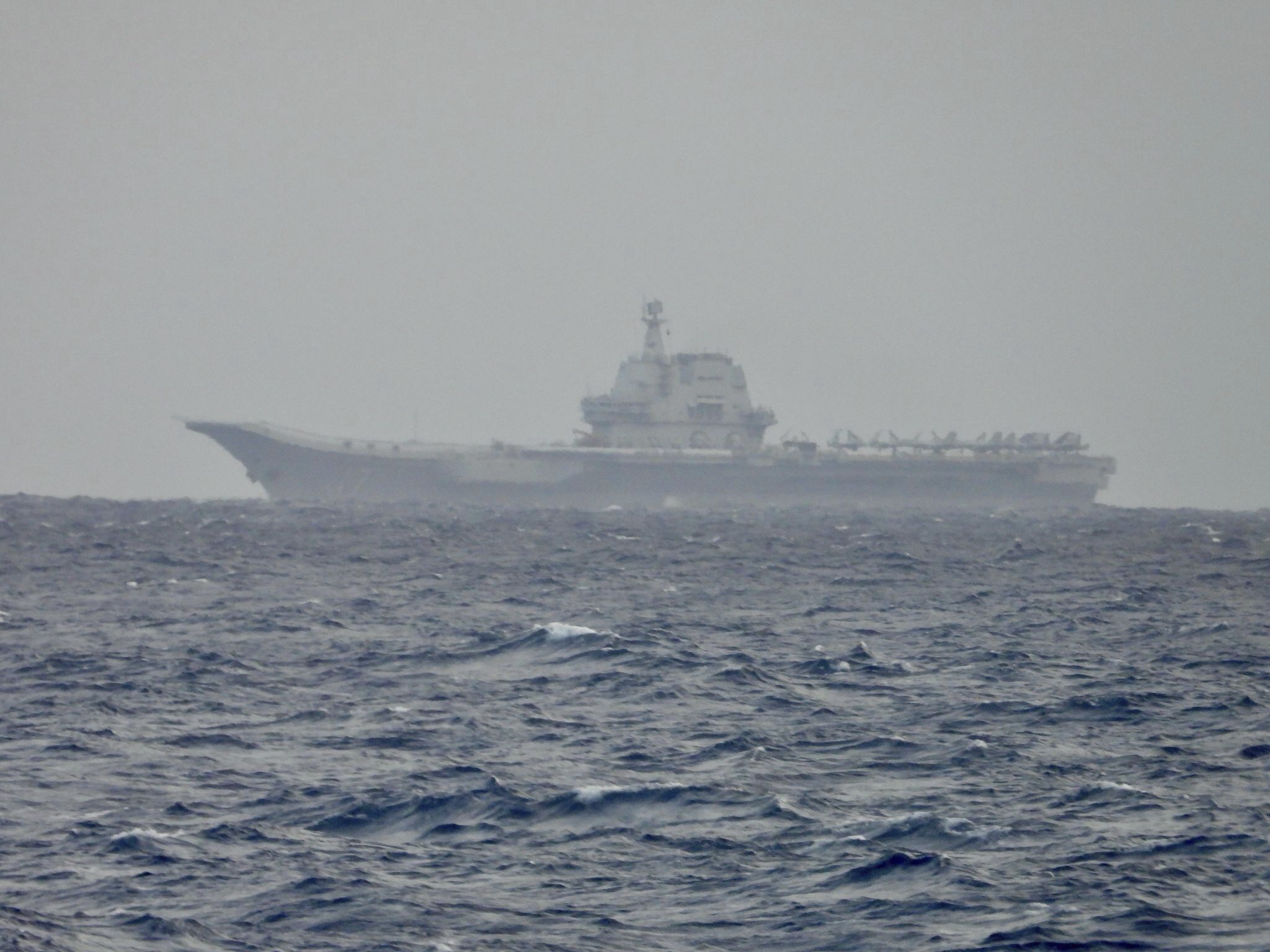
China dispatched a naval group led by an aircraft carrier to the western Pacific Ocean after the United States deployed ship-sinking missiles in the Philippines for a bilateral war game.
Newsweek has contacted the Chinese Defense Ministry for comment by email.
Why It Matters
China has often deployed its aircraft carriers, two out of three ships in active service, to the waters beyond the first island chain—a U.S. containment strategy formed by Japan, Taiwan and the Philippines that seeks to restrict the Chinese military’s access to the Pacific Ocean.

Taiwan Ministry of National Defense via AP
The U.S. military is conducting a joint exercise in the Philippines, which involves NMESIS anti-ship missiles. These missiles are planned for a deployment on the Philippine islands in the Luzon Strait, a choke point for China’s navy in the first island chain.
Meanwhile, territorial disputes between the Philippines and China remain unsolved, where maritime forces from both sides have engaged in standoffs and clashes. The U.S. has made a commitment to the security of the Philippines under a mutual defense treaty signed in 1951.
What To Know
The Japanese Defense Ministry reported that several Chinese naval vessels, which included China’s second operational aircraft carrier CNS Shandong, were spotted in the waters east of Luzon, the Philippines’ largest island in the northern portion of the country, on Wednesday.
A map by Newsweek shows the Chinese aircraft carrier was located within the 200-nautical-mile exclusive economic zone (EEZ) of the Philippines. It remained outside the Southeast Asian country’s territorial waters, which extend up to 12 nautical miles from its coastline.
The Philippine navy confirmed on Thursday that a pair of Chinese naval ships was spotted near the country on Tuesday—including the Shandong and CNS Tianguanxing, a Type 815A electronic surveillance ship that has the hull number 797.
Both vessels were first monitored near Cagayan on Tuesday, April 22.
The CV-17 (left) was tracked underway about 2.23 nautical miles SW of Babuyan Island while the AGI-797 (right) was monitored underway 33.11 nautical miles NW of Dalupiri Island | via @biancadava pic.twitter.com/VKi1XRnD3m
— ABS-CBN News (@ABSCBNNews) April 24, 2025
According to the Japanese military’s report, the Chinese aircraft carrier was seen conducting flight operations with its fighter jets. The report also said one of the Shandong‘s escorting ships was the Type 055 destroyer CNS Yan’an, which has the hull number 106.
The Shandong‘s deployment in the waters east of the Philippines confirmed that the Chinese aircraft carrier had transited the Luzon Strait, located between southern Taiwan and northern Philippines, connecting the South China Sea in the west and the Philippine Sea in the east.
Satellite imagery also showed that the Shandong was not spotted at its home port in Sanya in the Chinese southern province of Hainan, which faces the South China Sea, as of Monday.
The Shandong was last deployed from late March to early April, when it was spotted in the waters southeast of Taiwan and northeast of the Philippines during large-scale Chinese drills around Taiwan. China has threatened the use of force against the self-ruled island of Taiwan.
On the other hand, the U.S. Navy aircraft carrier USS Nimitz, which left the island of Guam on Monday after a port visit, was underway in the Philippine Sea as of Wednesday. The Nimitz is conducting a regularly scheduled western Pacific deployment.
What People Are Saying
The Pentagon’s report on China’s military power said: “In April 2023, the [People’s Liberation Army]’s second aircraft carrier, Shandong, held its first far seas deployment outside of the [first island chain], followed by two more deployments in September and November that broke aircraft sortie rate records.”
The U.S. Navy said on Wednesday: “Nimitz is underway in the U.S. Seventh Fleet area of operations on a scheduled deployment, demonstrating the U.S. Navy’s unwavering commitment to a free and open Indo-Pacific.”
What Happens Next
As the American and Chinese militaries continue to operate in the western Pacific Ocean, they are likely to have further encounters at sea and in the air.





